This was published 7 years ago
New Zealand motorhome road trip: from subtropical north to Rotorua
By Alison Stewart
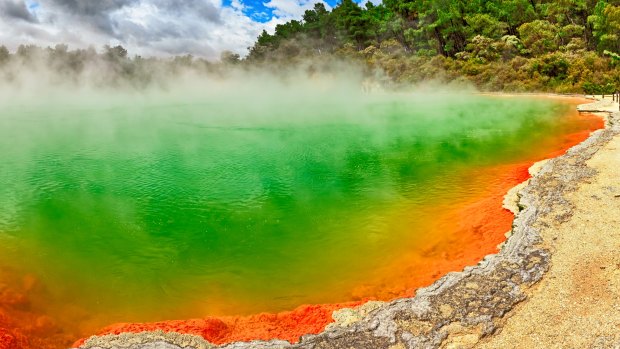
Enjoy the naturally brilliant colours of thermal pools such as the Champagne Pool at Wai-O-Tapu Thermal Wonderland, Rotorua.Credit: iStock
The sky is showing a pre-dawn flush as New Zealand's northernmost campsite at Tapotupotu Bay shivers under a mist blanket, but people are already on the move. Like turtles from the sea, we're headed to Te Rerenga Wairua – Cape Reinga.
Out of the valley we climb, reaching the lighthouse at the top of New Zealand for that ethereal moment when the new sun emerges at the point where the Tasman Sea and Pacific Ocean meet.
But the sunrise has an extra dimension on this wild Aupouri Peninsula rising from the body of Northland like the sword of a breaching marlin.
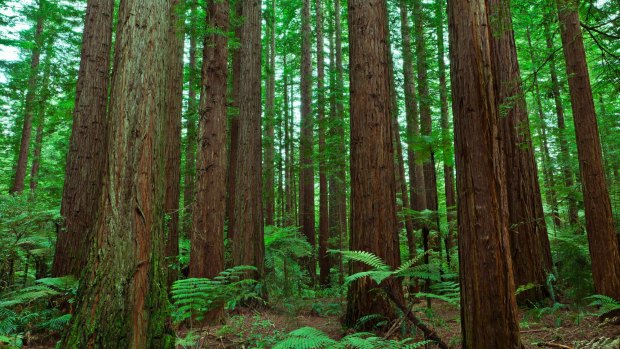
The tall trees of a redwood forest, with fern undergrowth.Credit: iStock
Cape Reinga is "the leaping place" for Maori spirits beginning their final journey to their ancestral home of Hawaiiki, travelling the spirits' pathway – Te Ara Wairua. This is the most spiritually significant place for Maori in New Zealand, and no one approaches the gnarled 800-year-old pohutukawa (New Zealand Christmas tree) – the final departure point for the dead.
We're on a 1500-kilometre North Island roadtrip that sweeps around subtropical Northland – the "winterless north" – before plunging into Rotorua. While our journey takes us to two disparate regions, there's a common thread – the splendour of a geologically adolescent land and the rich vein of Maori tradition.
We're also on a road less travelled. For many visitors, New Zealand ends with Auckland, rendering Northland, with only 150,000 inhabitants, pristine country tourism-wise. And Rotorua, once a tourism Mecca, has lost numbers to the likes of Queenstown.
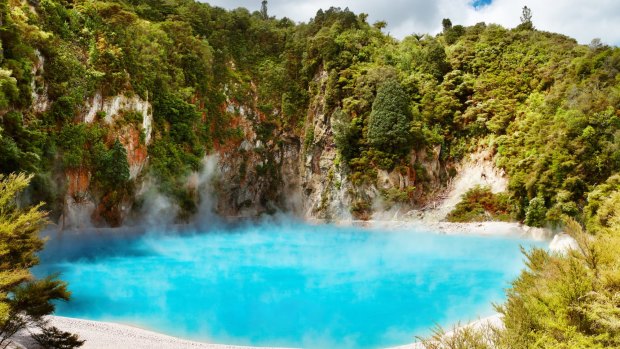
Inferno Crater Lake in Waimangu volcanic valley.Credit: iStock
We collect our campervan at Auckland airport and get cracking for the three-hour drive to Dargaville and our first west coast stop – the forested Kauri Coast Top 10 Holiday Park tucked into a river bend.
"Why are you going to Northland?" asks a New Zealand-born friend pre-trip. "It's just kauri trees."
It's a truth that travellers with high expectations can face disappointment. Conversely, lowered expectations may produce travellers' euphoria. Northland is exquisite! Not simply in its hilly, green terrain, ancient stands of native kauri, manuka prehistoric ferns, turquoise harbours, white-sand beaches, pockets of hippie culture, historic waterfront, real-estate-agent-free Victorian-era towns. But also because it is where New Zealand began, politically.
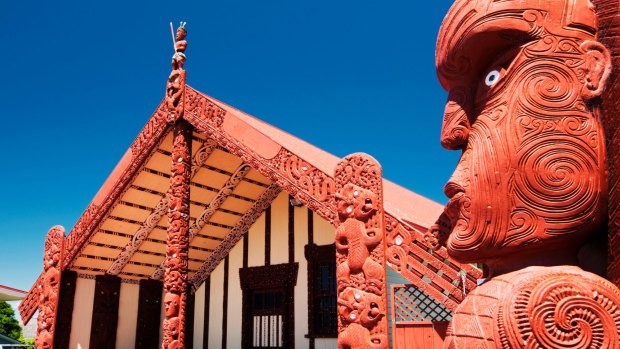
Wood carving outside of Te Papaiouru Marae, a Maori meeting house in Rotorua.Credit: iStock
At the largest of the remaining kauri forests, Waipoua, north of our campsite, Maori guide Wiremu (Bill) Matthews introduces us to the luminous 2000-year-old lord of the forest, Tane Mahuta, chanting greetings and reciting oral history.
Bill also shows us Hokianga Harbour, which stretches 50 kilometres inland, home of orcas, stingrays and great whites. This is where the first Maori explorer, Kupe, arrived from Polynesia in his waka (canoe) more than 800 years ago. Many Maori trace their ancestry to Kupe and Northland has some of the oldest traces of Maori settlement.
We take a breather at the Landing Cafe at Opononi on the rockflour-turquoise harbour. Excellent coffee and chocolate cake launch us back on to the road, armed with a newly-bought road map for when Google Maps fails, as it did in the mysterious emerald forest.
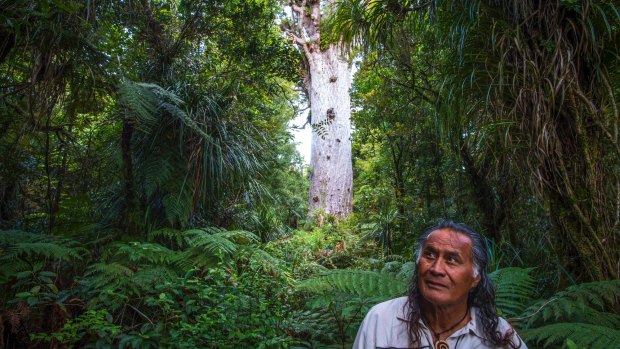
New Zealand Northland Kauri Coast - Bill with Tane MahutaCredit: NorthlandNZ.com
We're increasingly grateful for our two-person Apollo Euro Tourer, which has a powerful engine for the hills, is narrow enough to negotiate the winding roads and has rear double-doors, allowing view admiring while sipping fine New Zealand wine.
The road to Cape Reinga traverses historic timber villages such as Rawene where we cross the harbour by car ferry. Rawene now has funky art galleries and cafes housed in heritage buildings.
Kohukohu is another village where Victorian kauri wooden buildings are beautifully preserved and galleries such as Village Arts throw terrific exhibitions.
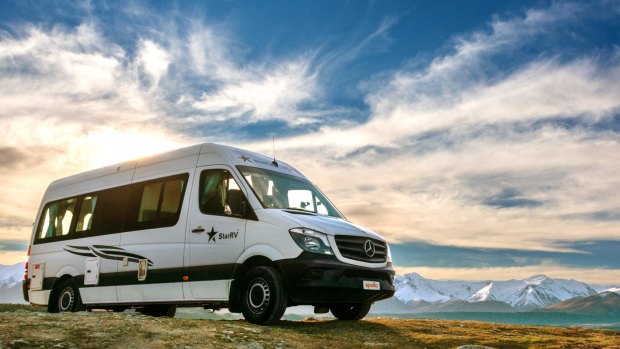
Apollo Motorhomes Euro Tourer.
These hamlets reflect the fact that Northland was also the landing place for 18th-century Europeans, attracted by kauri logging and gum harvesting. Croatian history was written here when people from the Dalmatian coast came to work the gum fields in the late 1800s.
Northland narrows as we hit Ninety Mile Beach, which boasts impressive signage of cars sucked into quicksand and silly-billies trapped by the tide. We park the campervan carefully on tarmac. Not too impressed by hurtling four-wheel-drives, we retreat to the little town of Ahipara for jumping fresh snapper and chips from Bidz Takeaways.
Te Paki Recreation reserve signs mean we're nearing the end of the peninsula – the landscape becomes more primeval. Dune riders whiz down the Te Paki sand dunes with their No Dumping sign, which some wag has modified to "No Cumping".
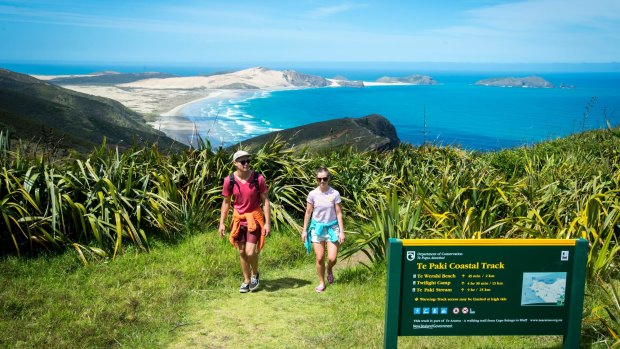
New Zealand Northland Te Paki Coastal Track.Credit: NorthlandNZ.com
We experience "cumping" euphoria at Tapotupotu Bay, parked under a giant pohutukawa with a river on one side and the bay on the other.
Next stop is the birthplace of the nation, the Bay of Islands, not just a spectacular aquatic paradise but also where Maori chiefs and the British Crown began the 1840 Treaty of Waitangi signing.
First though we lob at the secretive Whangaroa Harbour (pronounced Fongaroa, just as kauri is "kodi"), so well camouflaged that Europeans consistently sailed past. Our beaches and bays harbour tour with Mark and his dog Boyd covers Maori and European history, including the fact the local tribes were so warlike and (gulp) hungry, Europeans kept sailing past for quite some time.
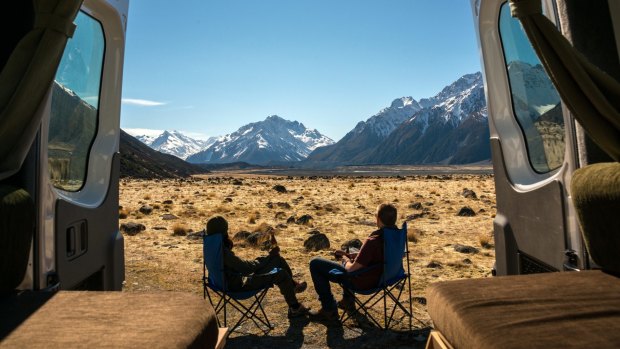
Apollo Motorhomes Euro Tourer
Reminding me of the love story of the Maori Rotorua boy who charmed a princess by serenading her with his flute, fashioned from someone's arm bone.
Our trip coincides with the Waitangi Day holiday, and we revel in our visit to the Waitangi Treaty grounds for cultural displays and a gigantic hangi, staggering happily back to our Waitangi Holiday Park on the Waitangi River.
Nearby Paihia is our launch pad for an array of activities, including a bay tour to walk pristine islands, visit hammerhead nurseries and rare volcanic plugs. We stroll New Zealand's first capital, romantic Russell, and indulge in a fine lunch at Charlotte's Kitchen on the Paihia wharf – grilled baby calamari with lemon and herbs and an unctuous asparagus and pea risotto. The Flying Fish Design Store reveals some excellent finds.
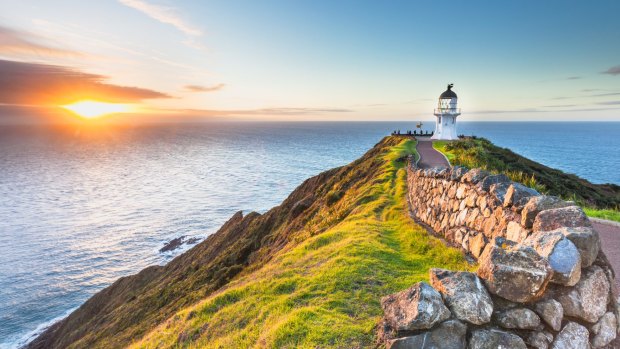
Cape Reinga at Sunset. Credit: iStock
Top Trail's Ray Clarke delivers us to Opua to cycle part of the newly opened 87-kilometre Twin Coast Cycle Trail, which traverses old rail corridors from Northland's east to west. At historic Kawakawa we admire the architectural Hundertwasser toilets and grab a divine brownie from 39 Gillies St.
Replacing our campervan in Auckland with a little Jucy Fiat, we beetle the three hours south to Rotorua's "restless earth". In this Jurassic place of sulphurous fumes, exploding geysers and boiling mud pools, the earth's crust is exceedingly thin – you hit magma after five kilometres, rather than New Zealand's standard 30 kilometres. The earth, like its traditional owners, is a wee bit scary.
This dynamic geothermal area, also a hotbed of Maori culture, is as green and gorgeous as Northland. The 18 lakes and three major rivers curve around the town, the mountains and the forests, yielding a blinding array of activities.
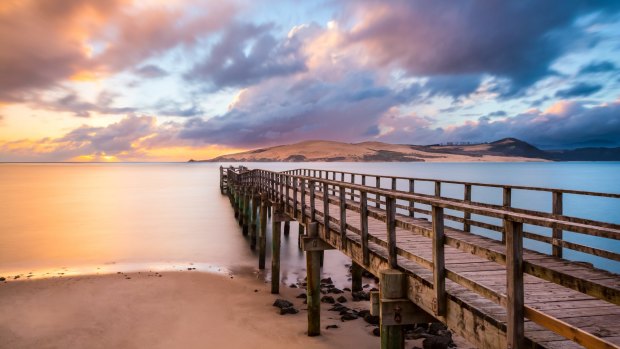
New Zealand Northland Hokianga Harbour.
In Rotorua, we walk the Waimangu Volcanic Valley, the world's youngest geothermal eco-system. It's a hands-on lesson in volcanic activity.
The valley emerged when Mount Tarawera catastrophically erupted in 1886, opening a 17-kilometre rift, splitting the mountain in two, forming the seven craters visible today, massively expanding Lake Rotomahana and destroying the lake's world-renowned Pink and White Terraces.
Allow at least an hour for the numerous hot springs, bubbling craters, lava and silica terraces, geysers, the blue jewel of the Inferno Crater, and regenerated native plants.
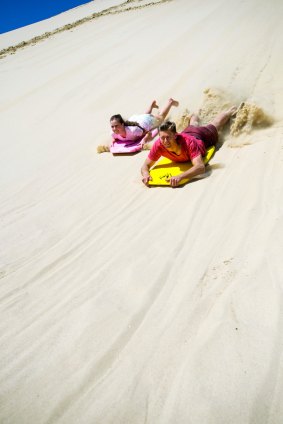
Te Paki sandboarding.Credit: NorthlandNZ.com
The Wai-O-Tapu Thermal Wonderland is another remarkable place with its brilliantly coloured pools, terraces and geysers with names like Devil's Ink Pots, Champagne Pool, Artist's Palette and Rainbow Crater. Wai-O-Tapu's mud eruptions were recorded to represent Mordor in the Lord of the Rings films.
The knowledgeable Gay Kingi, who is married to a Maori, collects us from our 1897 Princes Gate hotel, the city's oldest, and walks us through Rotorua's European and Maori history on a Kia Ora guided city walk.
Ohinemutu is fascinating. It's a living Maori village on the lakeshore, home to the Ngati Whakaue tribe, a sub-tribe of the Te Arawa waka, which journeyed from Hawaiiki. The area's abundant thermal energy, used for bathing and cooking, bubbles and spurts somewhat provocatively.
Gai takes us into the magnificent lake-edge St Faith's Church whose Tudor-style exterior contrasts with the interior Maori carvings and woven panels. Look out for the Maori Jesus window – he glides serenely across the lake.
Te Puia offers another Maori cultural experience where Pohuta, the southern hemisphere's largest geyser, sends up 30-metre plumes about twice an hour. Our traditionally tattooed guide tells us the Maori are "a fighting culture" as Pohuta explodes behind her. I think of the armbone and our hapless Wallabies rugby team.
A brisk walk along New Zealand's longest living tree walk in Rotorua's mighty Redwood Forest and a soak in the Polynesian Spa soothe the soul. Then it's a fine meal at the Regent Room Restaurant in a funky, renovated 1960s hotel.
Our dinner includes a trio of lamb cutlets, braised shank, sweetbreads, leek, pea and potato confit and the panfried snapper, prawn, mussels, crispy fishcake, wakame seaweed, shellfish bisque reduction and puffed tapioca – phew! We can't pass on dessert – candied apple and dark chocolate marquise.
Nearby Eat Street offers alfresco alternatives such as Atticus Finch, Terrace Kitchen and Leonardo's Pure Italian.
We now know a lot more about the North Island and Maori culture. We've survived some friendly Kiwi ribbing and have a million photos and memories of these green and shaky isles.
FIVE TIPS FOR DRIVING IN THE NORTH ISLAND
Department of Conservation campsites, though generally unpowered, are cheap and scenic. There are many similarly scenic powered holiday parks. Freedom camping is allowed, though strictly enforced. See doc.govt.nz/
Don't rush. An inadequate rail network means most freight goes by road creating hellish queues of assertive truckies.
Avoid peak times. Roads are good but mostly winding single lane. Northland's far north and west are better for traffic jams than the Bay of Islands and Rotorua.
Passing lanes are short and infrequent, and truck drivers insist on passing one another, leaving fuming car drivers crawling behind.
Apart from truckies, New Zealand drivers are polite, though you do see stickers like, "I'm a Kiwi, not a terrorist. I pull over to let people overtake." This might possibly be a dig at tourists.
TRIP NOTES
MORE INFORMATION
FLY
Air New Zealand flies from Sydney, Melbourne and Brisbane to Auckland. See
TOUR
Apollo Motorhomes' two-berth deluxe campervan, the Euro Tourer, has toilet and shower, heated cabin and living area, double bed, kitchen with microwave, gas stove and fridge, storage and 2.4-litre turbo diesel engine. See apollocamper.co.nz
Jucy has a large variety of cars plus speedy pick-up and drop-off service. See jucy.co.nz
STAY
Kauri Coast Top 10 Holiday Park, Dargaville, has parkland, native bush and river settings. Guided kiwi night walks. Offers cabins, units, powered and non-powered sites. See kauricoasttop10.co.nz
Tapotupotu DOC campsite, Te Paki Recreation Reserve. Cost is $NZ8 per person, no booking. See doc.govt.nz
Waitangi Holiday Park near the treaty grounds has cabins, powered and non-powered sites with Waitangi River waitangiholidaypark.co.nz
Princes Gate Hotel, Rotorua, has doubles from $NZ180 with breakfast. See princesgate.co.nz
Alison Stewart was a guest of Tourism New Zealand, Northland Inc, Destination Rotorua, Apollo and Jucy.
Sign up for the Traveller Deals newsletter
Get exclusive travel deals delivered straight to your inbox. Sign up now.